The original coat of denim losquets is the thing that helps create spectacular accents in the interior and make the style of your home in unique, modern, in the spirit of the last trends. We offer ideas, descriptions, analysis of popular techniques.
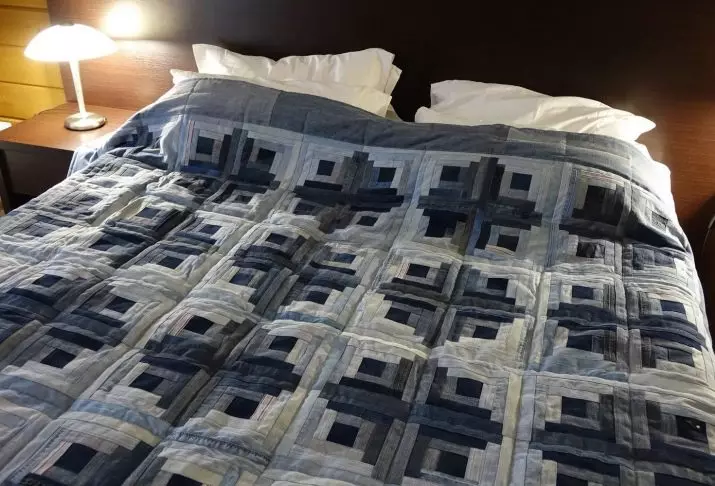
Features and Sewing Rules
The history of patchwork sewing is not one hundred years. The art of harmoniously connect different pieces of fabric Our great-grandmothers owned perfectly. This is quite a creative and exciting occupation.
Patchwork sewing is performed in the patchwork style, and this is a great way to put the remaining trimming, flap and pieces of fabric. Such a sewing technique is easy and allows even a beginner needlewoman to create original attractive things.
Most often it is plaids, blankets, bedspreads, pillowcases for pillows, wall and floor mats. Products made in this style are always at the peak of fashion.
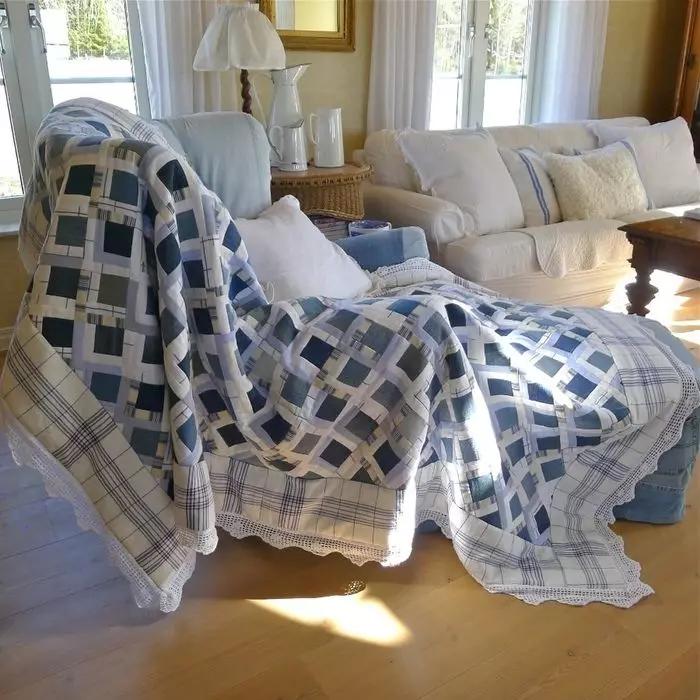

A patchwork blanket or covered - an indispensable thing in home use, refers to the category of home textiles, creates a unique warm atmosphere and comfort, is an exclusive expression of the creative start-up of the needlewoman, has its own unique style, harmoniously complements the interior of the room, adding some highlight to it.
Very relevant and fashionable looks plaid or covered with denim flap. Such a thing due to a durable denim will last for many years and will never come out of fashion. Previously, the patchwork technique was used from the lack of fabric, according to poverty, as they say. Now it is a fashion trend. And the craftsmen are used when creating their works not only unnecessary loskutka, trimming, old things. Today on sale you can find whole sets for the patchwork with cuts of a completely new fabric. They are created by professional designers, updating the collections annually.
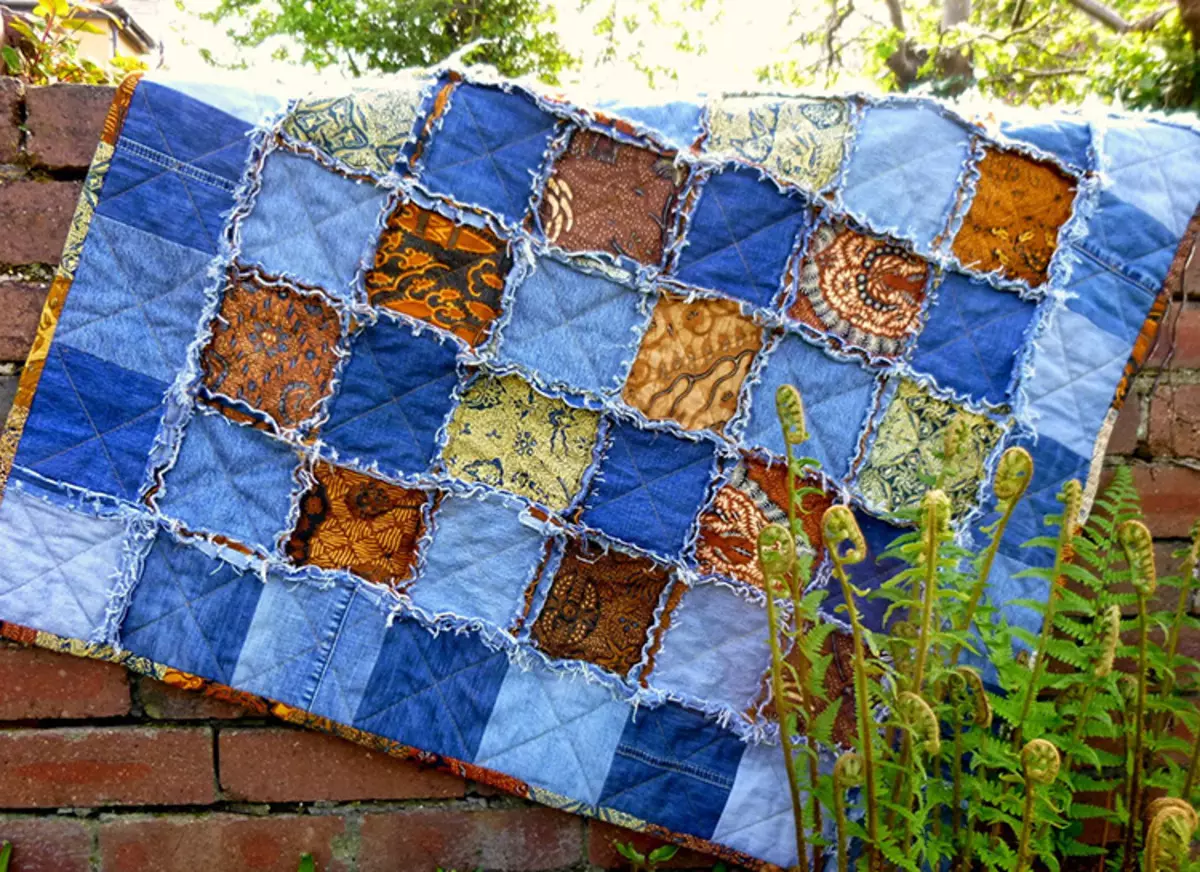
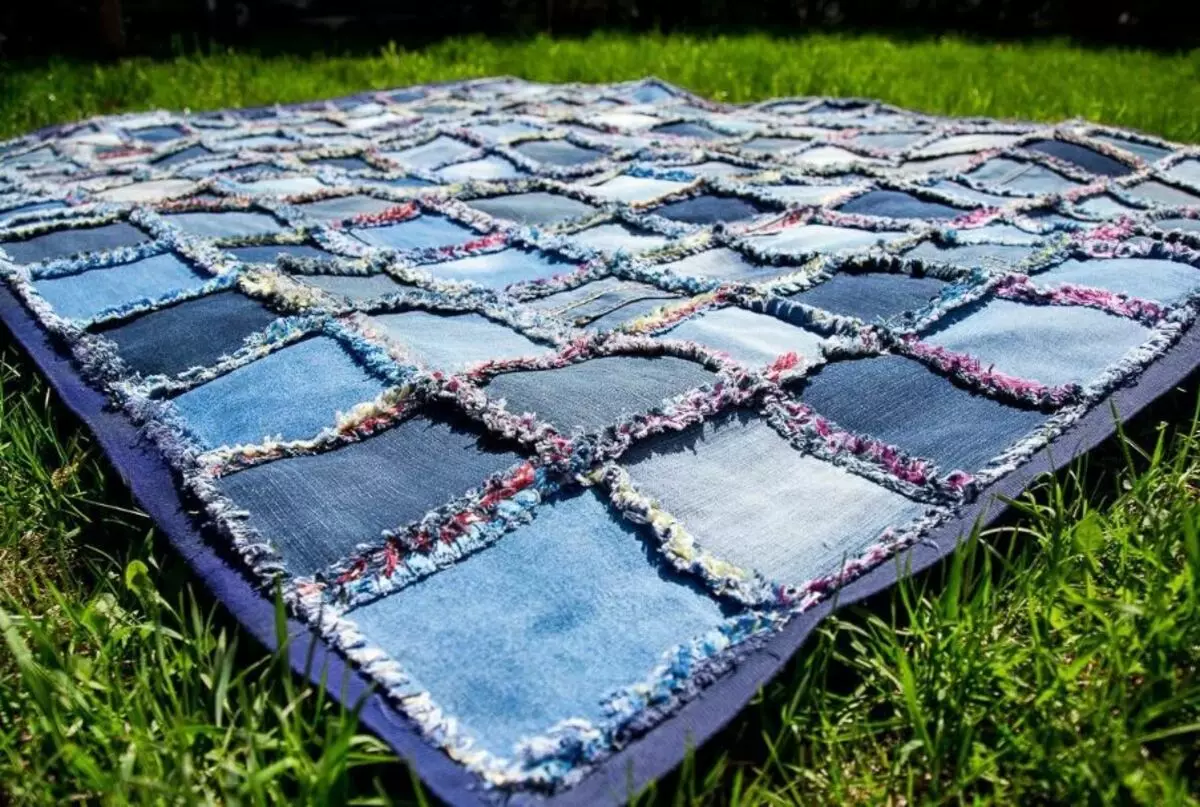
Overview Technician crossing flap
There are several techniques for crossling flaps - simple and complex. For beginners, it is better to use the easiest way - the squares that are cut across the finished pattern. This technique of crosslinking flaps is simple and forces even in the most inexperienced novice needlewomen. The product can be made not only from squares, but also of circles, rectangles, triangles and other geometric shapes. Just squares are the easiest sewing option in Patchwork. Consider the most popular joint techniques of tissue pieces.
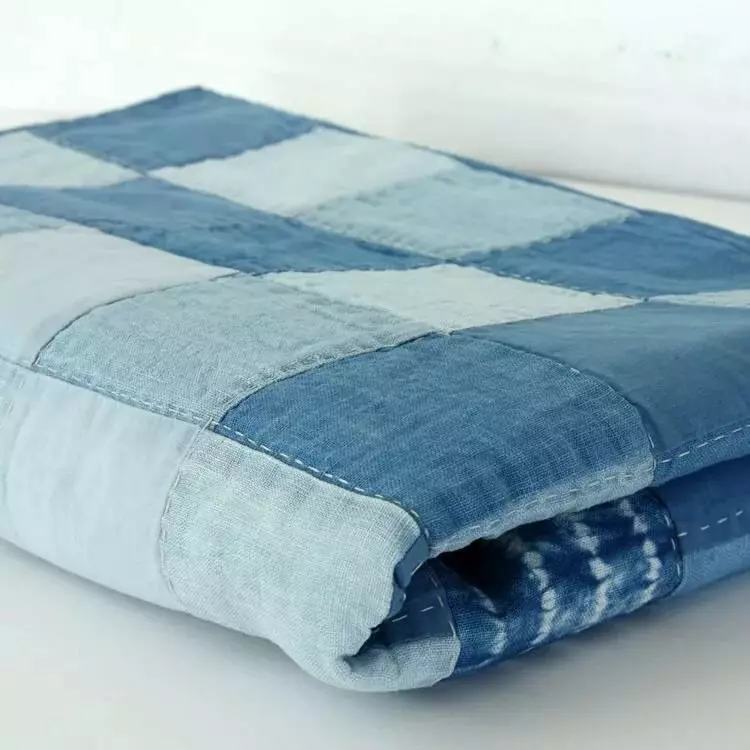

"Well"
This version of stitching the segments of matter is simple enough: Compound by special method of loskutka create the illusion of the depth of the well. There is enough creative and original technique, there are several centuries, there has been the greatest popularity in Europe and America. The vehicle is based on a square, which consists of separate strips of different tissue. There are several options for connecting strips (they are also called "logs").

The most popular and easy way:
- To the central square (it is the center of the composition and color accent) the colorful strips of spirals, light and dark, are applied;
- The first two strips are sewn to the opposite sides of the square, each next strip is applied in such a way as to capture the previous element.
Movement goes clockwise. When the main tier of the well is ready, the technique is repeated, the tiers are increasing in a similar sequence. It turns out something like fashionable 3D drawing, volumetric and deep.
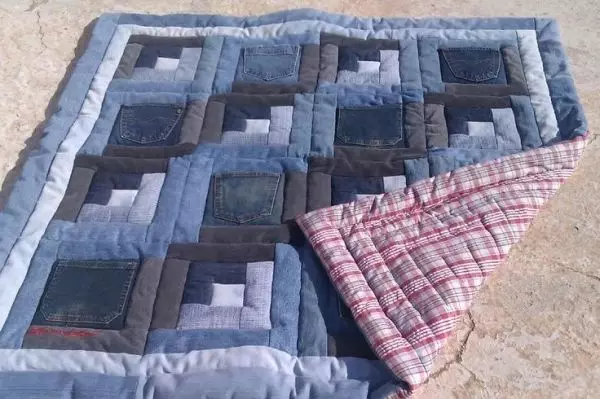
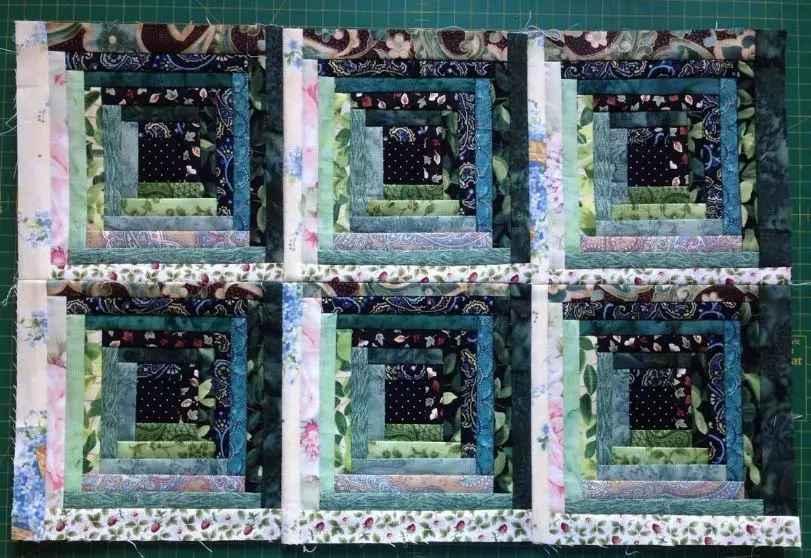
"Watercolor"
Watercolor technology allows you to create a product with different shades and overflows. Separate parts need to be connected sequentially to create a color composition. Each element on the tone is lighter or darker of basic color, first the darker tones are sewn, then brighter is added.
From jeans in this technique, it is quite difficult to make bedspreads, but maybe. The color palette of the denim is limited to several shades, so the selection of flaps and building the color sequence will take longer.
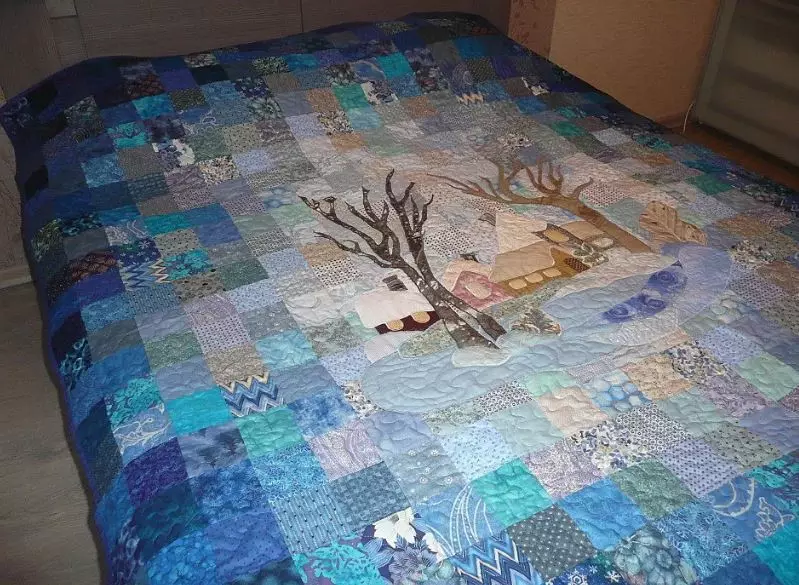

"Quick Squares"
The easiest and most affordable variant of the patchwork for beginner needlewomen. This technique allows you to sew covers in a few hours. . To do this, cut 3-4 rectangular fabric stripes of different colors, stack them along the long side. As a result, a one-piece cloth is obtained, from which the squares of the blocks of the desired size are cut, then the blocks are connected to each other.
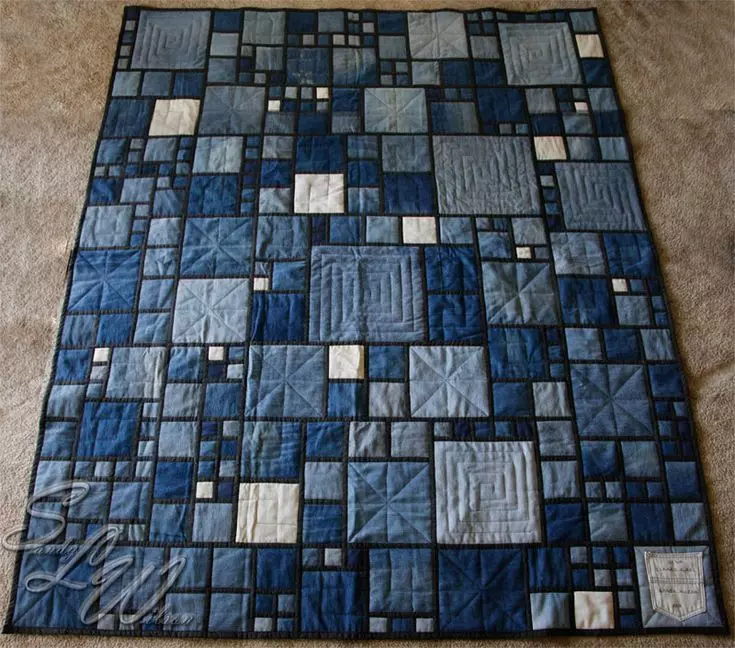
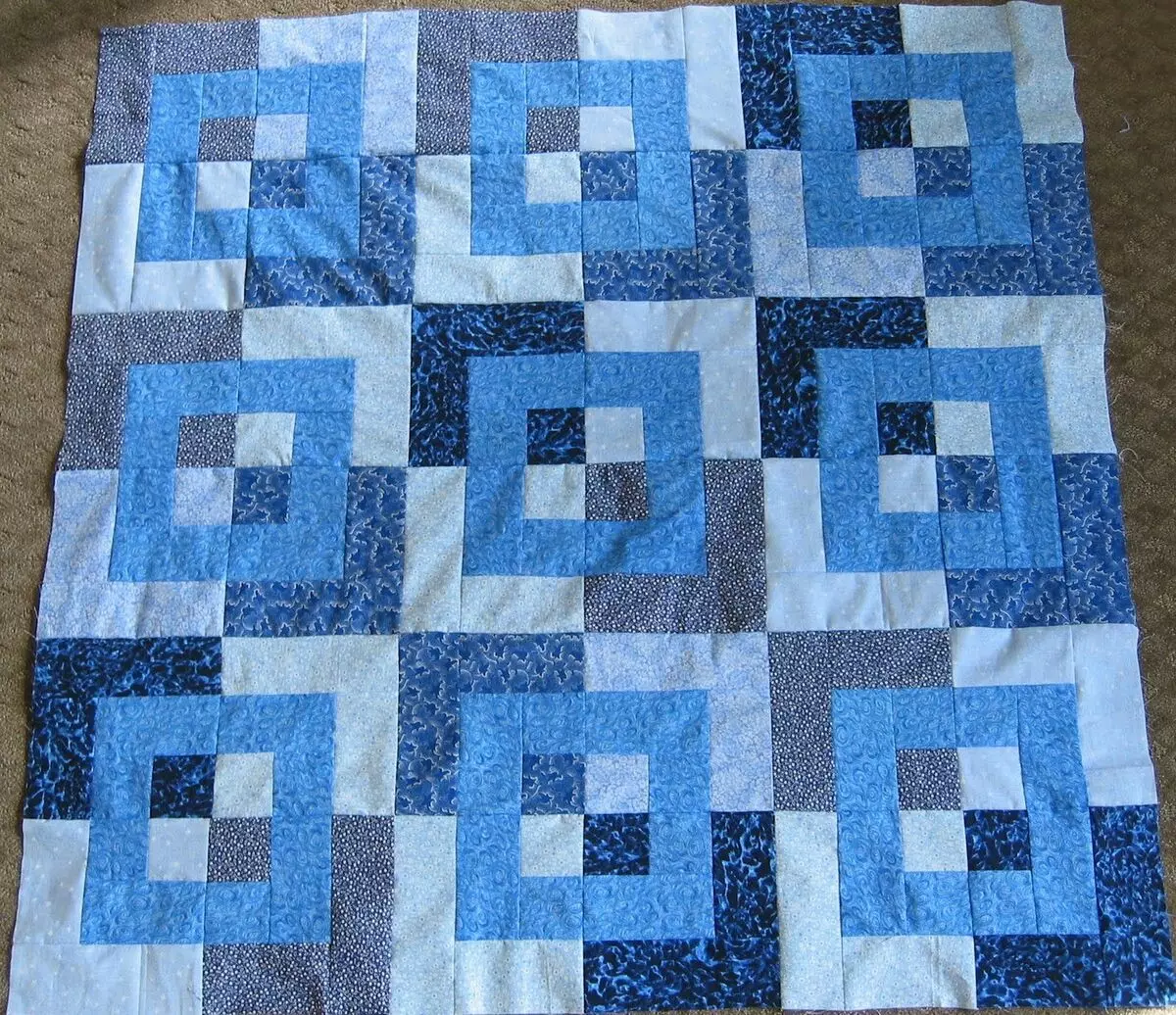
Crazy Patchwork
This technique for advanced and experienced needlewomen. Products made in this technique are real works of art. The crazy patchwork allows the connection of various tissues of any geometric shape and coloring in an arbitrary order, from the checked pieces of fabric or figure-cut across the edges. All seams are decorated with embroidered flat or embossed seam, braid, lace ribbons, beautiful buttons, beads, beads, glass, chains.
The craftswoman must gently sew among himself all sides of the patchwork elements, even the smallest trimming of the fabric can go into the case. The idea of technology consists in a chaotic connection of various pieces of fabric and their subsequent decoration.
This technique allows the needlewoman to show his fantasy and the talent of the decorator.
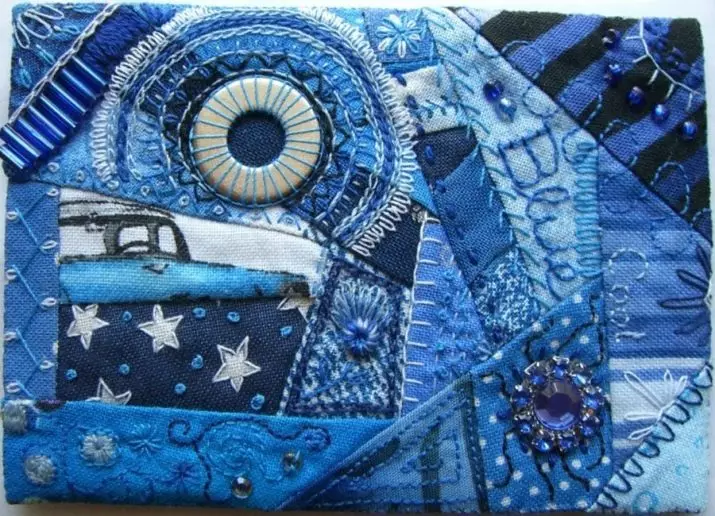
Strins
Sew a beautiful spectacular product in this technique is not at all difficult. The technique is based on a consecutive crosslinking of the tissue strips of different colors of one length and widths in different combinations. The strips neatly cut out of the nosheny jeans and are connected according to the selected scheme and color palette. This technique allows each needlewoman to show its fantasy and creative inclinations. To facilitate stitching, We need to develop a plan for connecting pieces and their colors in advance.
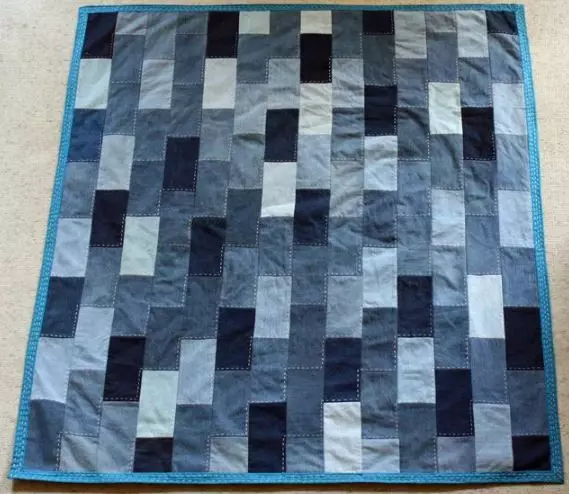
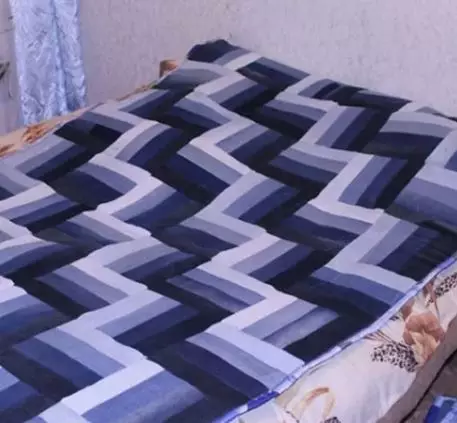
What fabric is suitable?
Denim beds can be sewed from old jeans. For this purpose, robust jeans pieces will be required.
Places where the fabric launched or broke, it is not recommended to use. A thing made using durable denim flap can serve for a long time.
When choosing a material for bedspreads, it is important:
- Use only one-piece durable jeans flaps;
- Take denim cuts of the same shade;
- With a combination of multi-colored flaps, the fabric is better to choose the same in its structure and thickness so that individual fragments of the web can not stand out and did not spoil the overall impression of the thing;
- Pieces of fabric with holes, false patch, with rivets are not suitable for the manufacture of bedspread.
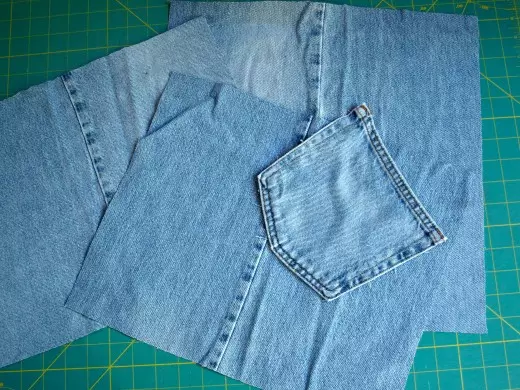
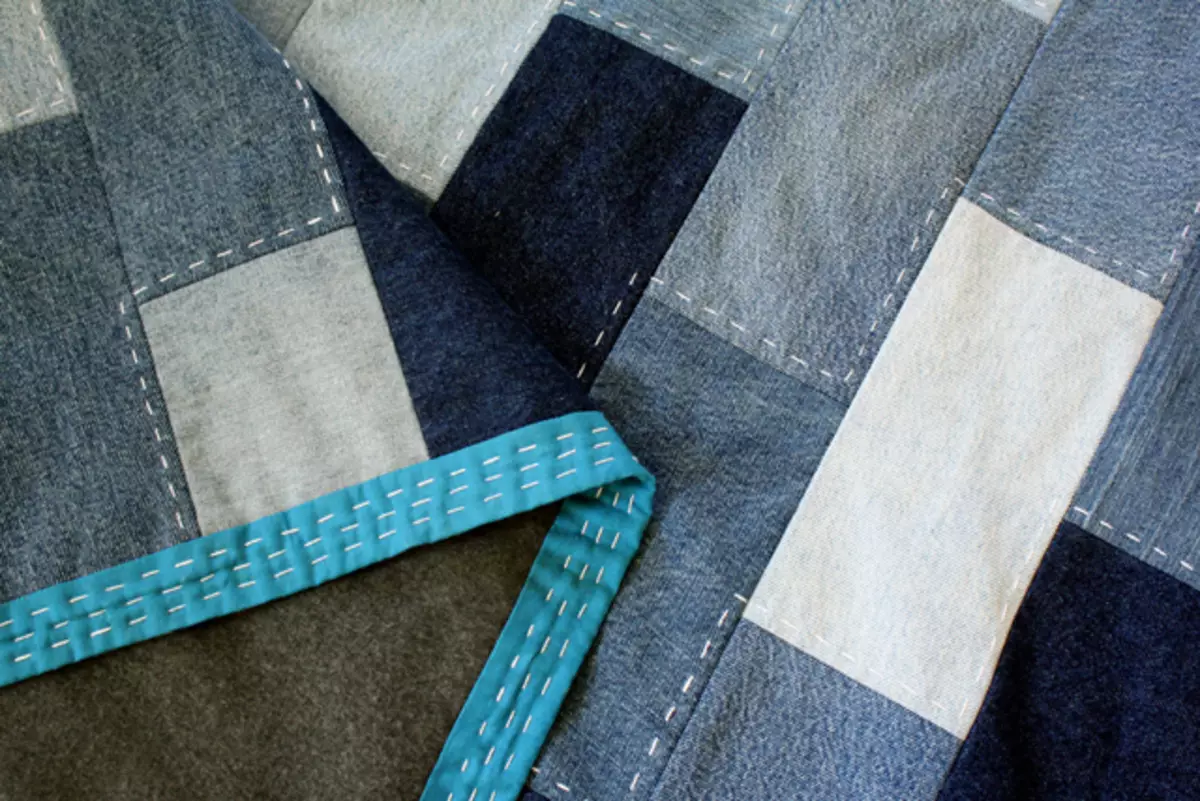
Required tools
To create a product made of done jeans, It is necessary to arm the materials and tools for this work.
- Unnecessary jeans, preferably several pairs. First of all, you need to prepare raw materials: carefully choose suitable pieces of fabric, places with yellow or modified color to work not to take.
- Select cloth for lining . The lower part of the bedspread should be durable, soft, warm. For this purpose, it is desirable to choose a fabric of natural fibers, best use wool, satin, flax. In order to save, instead of wool, you can use a synthetic bale or batting. Then, as a lining material, you can take any thin cotton fabric of suitable colors or one-photon.
- Pick up a cloth for processing a kayma All over the perimeter covered.
- Threads and sewing needles should be fat and durable . Sew denim fabric is not easy due to its thickness. The threads in color is better to take into the tone of the main matter or contrasting to visually select the cross-linked parts and elements.
- Tight cardboard For the manufacture of patterns-stencil, a centimeter tape, a pencil, a thin piece of dried soap or chalk for marking parts on a piece of fabric.
- Portnovo needles To rock the parts before the action, sharp tailoring scissors, special ripping knives for swelling seams or small scissors for manicure.
- Sewing machine . Special foot for the overall tissue.

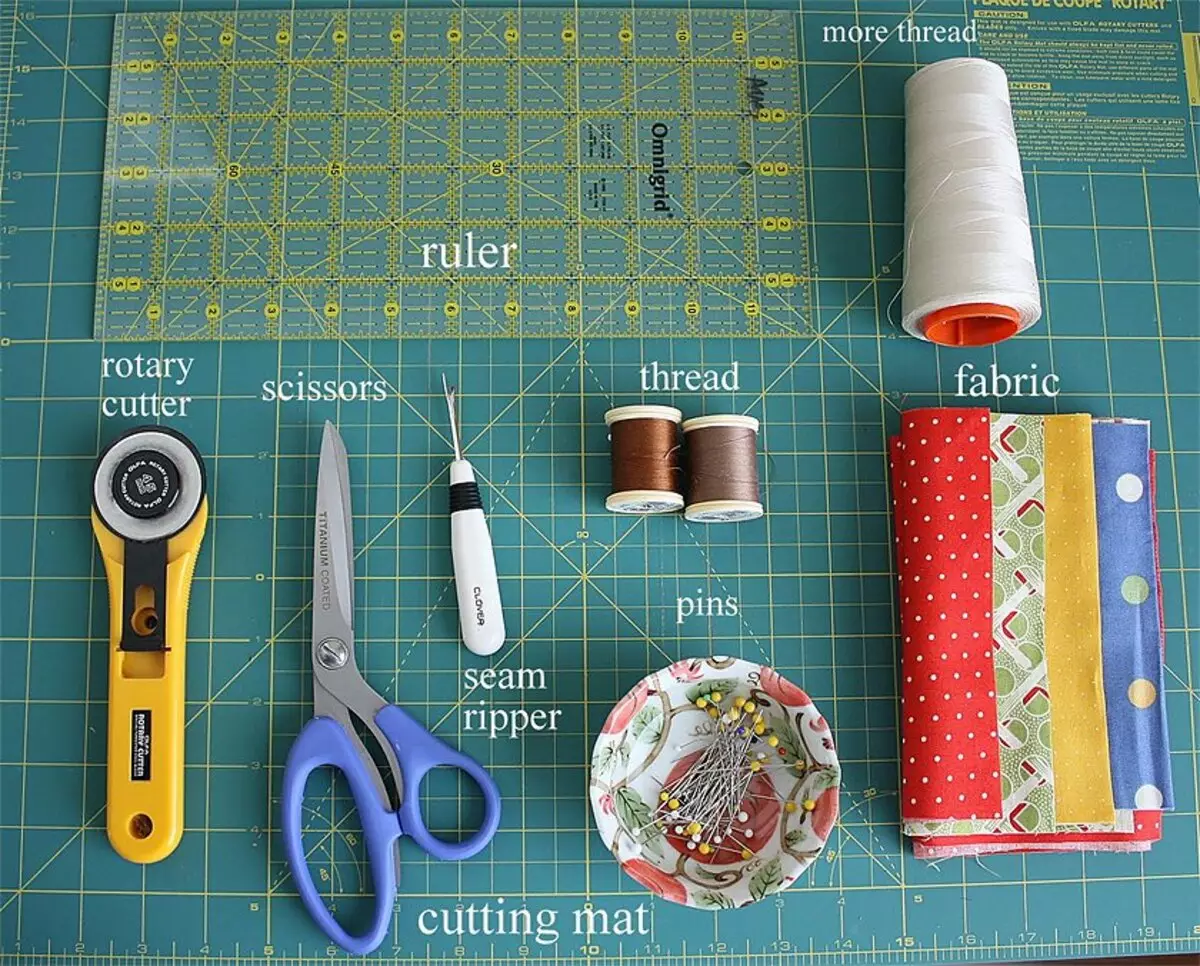
How to sew your own hands?
If you have little experience in the sewing of such products or it is absent at all, see the master class of experienced craftsmen on the Internet. Visual videos or step-by-step photos give a complete picture of the upcoming work, which is divided into certain consecutive stages.
First step.
- Main material should be declared, prepare all the necessary tools. , to decide what kind of type will be covered: one-layer, two-layer, with or without decor. Prepare raw materials from jeans and additional fabric for the bottom of the bedspread and its edging.
- Make accurate calculation of squares (other elements), to determine their size depending on the desired width and the length of the bedspread. At this stage, it is necessary to conditionally divide the entire cloth of the future covered on equal squares and calculate their dimensions on equal squares and calculate their dimensions, also calculate the amount of wrap, adding 5 cm with each edge. It turns out 2 widths and 2 lengths with add 5 cm on each side (in general Difficulties need to add 40 cm).
- Prepare stencils From thick paper or cardboard.
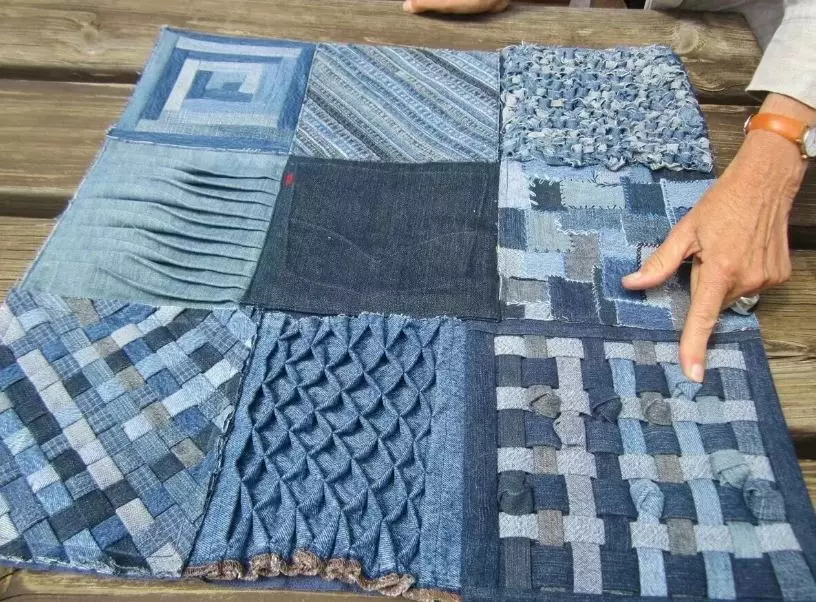
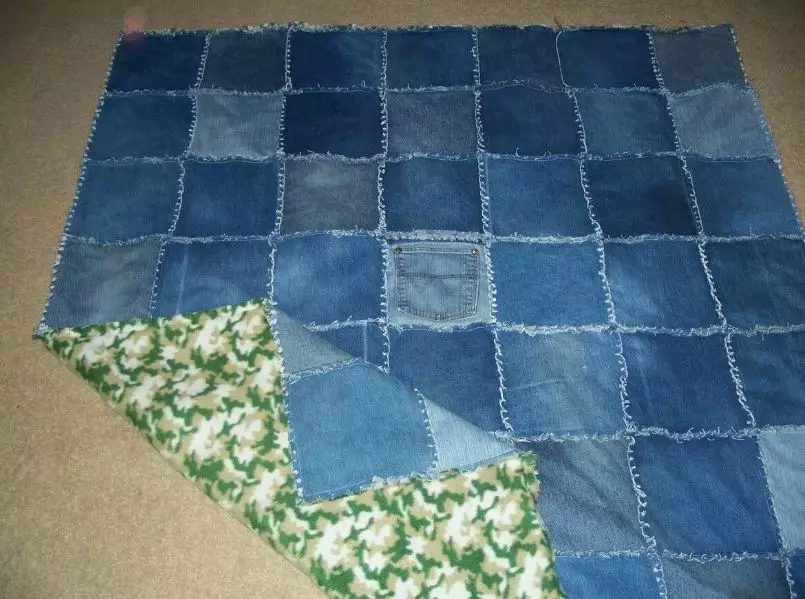
Second phase.
- Find out the schemes, patterns of the future product depending on taste, desire and fancy masters. Beginners most often take the "Quick Squares" scheme, more experienced needlewomen prefer the technique of "Well", "Watercolor" or "Crazy Patchwork".
- Cut the fabric to separate parts, place on each allowance on the seams and gently stack each other. The result is a solid canvas, stitched from individual jeans pieces. When the location of the equity and transverse thread should be taken into account, to ensure that one side of the square was on the equity, and the other on the transverse one. Such a cut avoids the deformation of the product after washing.
- Alarm squares are more convenient in one row, then all rows stack each other. To do this, each square needs to be connected to another with the help of portno needles and strain. Ready-made semi-finished bands should be disappearing well and smooth the seams. Then all stripes stack at their length and also trust the seams of seams.

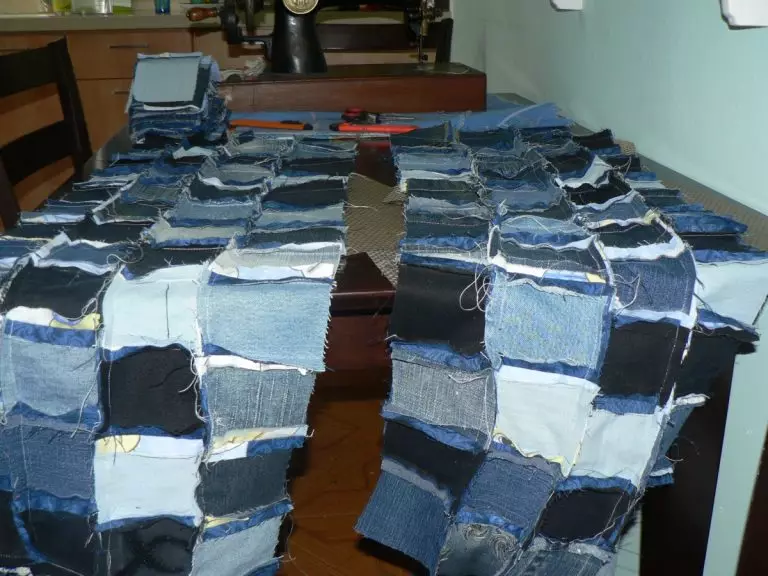
Third stage.
- Give the product to the final look. Wash in gentle mode, dry and rejuvenate with steam.
- Decor covered with additional materials if desired. The perimeter of the product can be decorated with a beautiful fringe, braid. It looks implicitly covered with crocheted.
Do not be afraid of experiments, turn on the fantasy and enjoy the process of creativity. Every time it will get better. And the interior will play new paints when it will be decorated with warm things with special energy created with love and care.
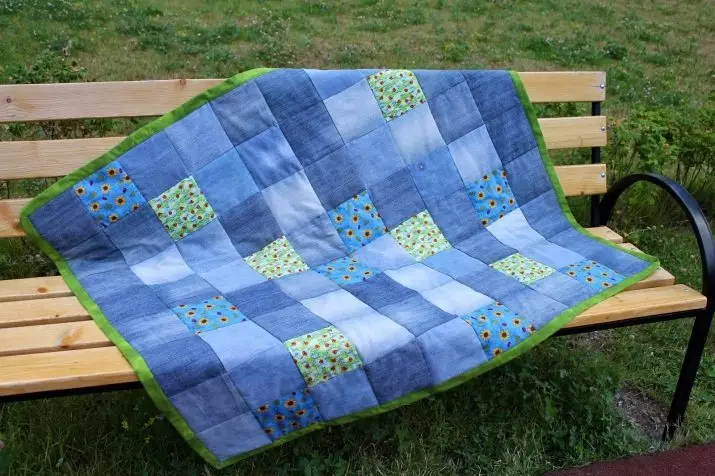
On how to sew a blanket from denim flap, look in the video.
